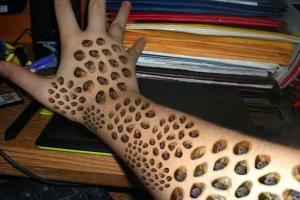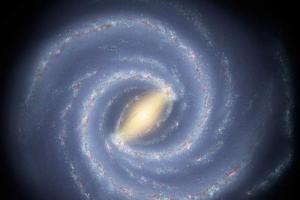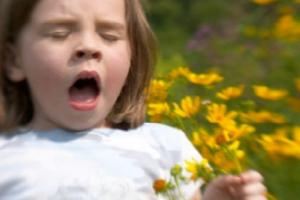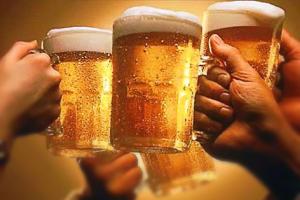Women are accustomed to perceive lower back pain as something familiar, although malaise can be a sign of a serious pathology. When to undergo an examination and rush to a specialist for treatment with lumbar pain?
Physical exercise
Overestimated yourself? Did you work out at the gym the night before? Or did you decide to enclose the summer cottage from all the weeds at once in one day? Then it is clear why the next day you cannot get up, and when you get up, bend down.
Such pain is characterized by:

After 2-3 days, muscle pain in the lower back will pass.
Pathologies of the spine
Although physical activity is not so harmless - after them, diseases of the spinal column can worsen. If earlier they were characteristic of older people, then recently they have become much younger. Especially pathologies that have been inherited, caused by infection and impaired posture.

Why do pathologies usually develop in the lumbar spine? This part has to endure the greatest load. And even the size of the vertebrae does not save. Therefore, the following diseases are so often diagnosed.
Painful lumbago
Gives himself a sharp lumbago in the lower back. If earlier it was usually diagnosed in men, then today women can “boast” of a similar disease. Among the reasons are:

The occurrence of inflammation and pain of the sciatic nerve indicate a displacement of the intervertebral disc. Lumbago usually appears unexpectedly, during a sudden movement or heavy lifting.
Pain is explained by irritation of receptors located in the area of the damaged disc or nearby ligaments.
The pain in the lower back is not just shooting, but throbbing and tearing. There is a feeling that it is located far inside the body, not in the muscles and ligaments, but in the bones.

Any movement increases the pain, so a person has to stand in a forced position for a long time. In the supine position, she subsides.
Radiculitis as a symptom
Radiculitis is a symptom of damage to the spinal cord. In the course of compression of the nerve endings appear:
- pain;
- violation of sensitivity;
- movement restriction.
Pain in the lumbosacral region is given to the leg (thigh, lower leg and foot).

The development of radiculitis is affected by osteochondrosis of the spine, which is characterized by loss of elasticity by cartilaginous discs and a decrease in the distance between the vertebrae. Although this is not the only reason. Sciatica can occur during a sharp turn, after injury, hypothermia or poisoning. Lifting weights does not provoke sciatica.
Intervertebral hernia
Pathology occurs in the cervical and thoracic regions, but more often in the lumbosacral. The core of the intervertebral disc is displaced and the fibrous ring is torn.
The clinical picture of such degenerative changes is as follows:

All symptoms can be observed for a long time, but decrease after 6 weeks.
Gynecological problems
The female anatomy is such that the pathology of the genital organs affects the lower back more than the abdomen. After all, the female organs are located in the middle part of the small pelvis.

In addition to the accompanying symptoms, during gynecological diseases, it pulls the lower back. There are many reasons for women to get excited when pulling pain appears.
Inflammation of the ovaries and appendages
Do not sit on the cold, otherwise you will catch a cold. How often this warning was heard from mothers. But the cause of female inflammation is not cold at all, but infections. Low temperature still plays its role - it weakens the protective functions of the body.
Although inflammatory processes usually develop with a frequent change of sexual partner and unwillingness to use a condom.

Adnexitis (the medical name for ovarian inflammation) is provoked by staphylococci, gonococci, chlamydia, trichomonas, ureaplasmas, mycoplasmas and other viruses, bacteria and fungi.
The destructive activity of pathogenic microorganisms leads to abortions and infertility.
The classic signs of inflammation of the ovaries and appendages are:

If left untreated, the disease becomes chronic. The ovaries enlarge, adhesions grow. In acute inflammation, there is a risk of complications.
Signs of endometriosis
The disease is characterized by the growth of the inner layer of the uterine wall, moreover, outside the endometrium. Such growths are sensitive to female hormones that affect the menstrual cycle. Every month, bleeding occurs in them, which causes inflammation of the surrounding tissues.

This is why endometriosis develops in women of reproductive age and is accompanied by symptoms:
- pain in the abdomen and lower back, especially during menstruation;
- more abundant and prolonged menstrual bleeding;
- painful sensations during sexual contact;
- infertility.
Laparoscopy is performed to confirm the diagnosis. Ultrasound in this case is recognized as ineffective.
Ectopic pregnancy
For women, this diagnosis sounds like a sentence - it is so dangerous, sometimes fatal. The egg after fertilization is attached not in the uterus, but in the ovary or fallopian tube.

Here it begins to grow, stretching the body, which is not suitable for bearing a child. There comes a moment when it just rips apart.
In the early stages, an ectopic pregnancy is accompanied by the usual signs of pregnancy (delay, nausea, swelling of the mammary glands) and is no different from the uterine one.
Pathology may be suspected when symptoms appear:

The final diagnosis is made after an ultrasound scan.
menstrual pain
A rare woman can talk about painless periods. Some representatives may even lose their ability to work for a couple of days due to:

But this is not the only painful moment of the menstrual cycle. Discomfort is also felt during ovulation, when the egg leaves the follicle.
kidney disease
The state of the lumbar region is affected not only by the female genital organs. Similar pains are characteristic of kidney disease.

After all, they are located on the sides of the first two lumbar vertebrae.
Blood and urine tests help diagnose diseases.

Malignant neoplasms
The body of spongy bones that make up the vertebrae is most vulnerable to cancer cells. Sometimes the tumor is formed not at all in the lumbar vertebrae, but higher or in nearby organs. Metastasis reaches the vertebrae with tentacles.
Lumbar pain, the etiology of which is not determined from time to time, can be a symptom of the appearance of a malignant formation both in the bones and in the internal organs.

At the same time observed:
- enlarged lymph nodes;
- bone fractures;
- weight loss;
- lack of appetite;
- exhaustion.
So lower back pain should make a woman seek treatment right away. Usually, it hides diseases that require immediate treatment.
0- problems with the spine;
- gynecological diseases;
- diseases of the gastrointestinal tract, especially the intestines and liver;
- pathology of the urinary system;
- connective tissue injury.
Non-pathological causes that have nothing to do with diseases are:
- the presence of excess weight;
- sedentary lifestyle;
- lack of sports
- wearing tight clothing at the waist.
It is extremely difficult to determine on your own what exactly provoked the pain, since there are many reasons.
However, they all have unique symptoms, as well as a place of localization. But even this is not enough. Therefore, without medical diagnosis, it is not recommended to start any self-treatment.
Myositis of the lumbar muscles of the back
Myositis is inflammatory process of connective muscle tissue, which occurs due to injury, infection with viruses or bacteria, as well as toxins of one's own body. Provokes the development of this pathology such factors as:

Expert opinion
Mitrukhanov Eduard Petrovich
Doctor - neurologist, city polyclinic, Moscow. Education: Russian State Medical University, Russian Medical Academy of Postgraduate Education, Ministry of Health of the Russian Federation, Volgograd State Medical University, Volgograd.
As for injuries, here we are talking about those people whose profession is associated with constant standing or sitting, in which the back muscles are constantly in tension.
Muscle hypertonicity, in which the fibers do not relax, leads to microtrauma, which reduces their elasticity and ability to contract.
kind of pain
Myositis can manifest itself in two stages: acute and chronic. In the first case, the pain is aching, shooting, quite intense. Increases with any movement of the body. The chronic stage is characterized by frequent relapses, in which the pain is less pronounced, but manifests itself systematically with hypothermia of the body, infection with acute respiratory infections and acute respiratory viral infections, minor trauma or an awkward turn.
Localization
The pain envelops the entire lower back, spreading to the sacral region.
Diagnostics
The diagnosis is difficult and complicated by the fact that myositis has similar manifestations with other pathologies, so the diagnosis includes components such as:
- collection of anamnesis, where the doctor asks the patient about complaints and pains, their frequency and intensity;
- examination of the diseased area of the back, palpation and assessment of pain sensations (performed by a neuropathologist and surgeon);
- general and detailed blood test (rheumatic tests);
- x-ray of the lower back (helps to exclude pathologies of the spine);
- biopsy of soft tissues for the presence of pathogenic microflora.

Expert opinion
Filimoshin Oleg Alexandrovich
Doctor - neurologist, city polyclinic of Orenburg. Education: Orenburg State Medical Academy, Orenburg.
In the case when myositis is accompanied by skin manifestations, a consultation with a dermatologist may be required.
- Fastum gel;
- Apizartron;
- Nimide gel;
- Nicoflex.
In case of acute pain, the patient is shown bed rest, as well as a decrease in motor activity.
After 3-5 days of treatment, physiotherapeutic procedures can be used that help accelerate regeneration, as well as reduce the manifestations of the inflammatory process.
Spinal injury
 The most common injury that can cause low back pain is injury. It can be obtained by falling or hitting hard objects. Most often, such injuries accompany athletes, as well as those people whose professions are associated with mechanical work.
The most common injury that can cause low back pain is injury. It can be obtained by falling or hitting hard objects. Most often, such injuries accompany athletes, as well as those people whose professions are associated with mechanical work.
kind of pain
The pain is sharp, shooting, restricting movement. A hematoma is visualized at the site of the injury.
Localization
Lumbar region.
Diagnostics
Bruises come in various degrees of severity, in which different strengths of pain are manifested. To exclude the possibility of damage to the bone tissue, they resort to the help of x-rays. The picture shows the absence or presence of damage to the spinal column, which affects further treatment.
Usually a sign of a bruise is the presence of a hematoma, which is quite enough to make the correct diagnosis, after first asking the patient himself about what happened.
Treatment
Elimination of pain is performed locally with the help of ointments and creams that contribute to the speedy recovery of damaged vessels. The most effective are:
- Indomethacin;
- Heparin ointment;
- Troxevasin.
 If in the last century this disease was the prerogative of the elderly, in whom destructive processes were associated with the natural processes of aging, today pathology Increasingly affects the working-age population aged 30-40. There are many reasons for this:
If in the last century this disease was the prerogative of the elderly, in whom destructive processes were associated with the natural processes of aging, today pathology Increasingly affects the working-age population aged 30-40. There are many reasons for this:
- sedentary lifestyle, devoid of physical activity;
- irregular physical activity;
- rapid increase in body weight;
- wearing the wrong shoes.
Osteochondrosis is a disease of the spine, in which the cartilaginous intervertebral tissue becomes thinner, which leads to a decrease in the space between the vertebrae themselves.
As a result, closely spaced joints put pressure on the intervertebral discs, squeezing them, thereby provoking acute pain.
kind of pain
Pain, sharp. When turning, a crunch is heard in the lower back. Any movement is accompanied by pain.
Localization
Lumbar region and sacrum.
The presence of osteochondrosis is determined using radiography or MRI. The picture visualizes the state of the bone tissue of the vertebrae, as well as their localization relative to each other.
Therapy of osteochondrosis can last quite a long time, and to achieve the maximum result, complexity is important. therapy involves the use of analgesics and drugs. For relief of over-acute pain, it is used when an analgesic is injected directly into the intervertebral space. Creams are also used to help relieve pain, swelling and inflammation of the soft tissues, which increases with the deformation of the vertebrae relative to the spinal skeleton.
Physiotherapy is highly effective in relieving inflammation.
The most successful procedures are:
- electrophoresis with;
- UHF;
- phonophoresis;
- shock wave therapy;
- laser therapy.
To support the spine, special corsets are used to help reduce compression.
After the relief of acute pain, the rehabilitation process can include:
- - helps to reduce muscle tone, and also stimulates blood flow to the damaged area of \u200b\u200bthe lower back.
- - helps to develop the spine in the lumbar region, reducing dystrophic processes.
- in the pool - strengthens muscle tone.
- Manual therapy.
 Ankylosing spondylitis affects the spine with the presence of an extensive inflammatory process that provokes bone tissue dystrophy. This disease is chronic, it is not possible to get rid of it completely. The causes of occurrence are not fully understood, but it has been established that factors such as:
Ankylosing spondylitis affects the spine with the presence of an extensive inflammatory process that provokes bone tissue dystrophy. This disease is chronic, it is not possible to get rid of it completely. The causes of occurrence are not fully understood, but it has been established that factors such as:
- bad heredity;
- pathologically reduced immunity;
- the presence of pathogenic microflora in the body.
Most often, the disease affects the male body, but the most severe course of the disease manifests itself in women.
kind of pain
The pain is sharp, aching. Occurs after a long rest, and can also disappear after gymnastics or any physical exercise (which is a distinctive feature).
Localization
The epicenter of pain is located in the sacrum, after which the discomfort spreads to the lower back and iliac region.
Diagnostics
Primary diagnosis involves questioning the patient, as well as examining the painful area of the lower back with further palpation. There are a number of techniques to help identify this pathology using special tests for spinal mobility and chest volume.
Hardware research involves the use of radiography, which displays the pathology of bone tissue and deformation of the vertebrae.
You will also need tests such as:
- general and biochemical blood test;
- gene typing;
- Analysis of urine;
- blood test for rheumatic factor.
In the case of an advanced stage of pathology or an extensive inflammatory process, an MRI may be required, which will allow you to accurately assess the extent of the disease and suggest the further course of the pathology.
Treatment
In fact, it is impossible to stop the destruction process caused by inflammation. However, drug therapy can significantly slow it down. The most effective drugs of complex direction are:
- Cyclophosphamide - suppresses the immune system;
- Prednisolone is a hormonal drug that suppresses pain, swelling and inflammation;
- - relieves discomfort directly at the site of pain.
- - has an antibacterial effect.
- Scootamil - necessary for muscle relaxation.
Physiotherapy procedures are highly effective in the treatment of this pathology:
- ultrasound;
- shock wave therapy;
- white clay compresses;
- paraffin therapy;
- inductothermy;
- sulfide baths.
Moderate pain in the middle of the cycle, as well as a few days before the start of menstruation are the norm and do not require treatment. This natural process, which helps control a woman's fertility, may be accompanied by similar manifestations, which is not a pathology.
Only paroxysmal and constantly recurring pains require attention, which may indicate the presence of an inflammatory process, or any other pathology of the reproductive organs.
kind of pain
Aching, pulling, short-term. The pain is able to go away on its own.
Localization
Lower abdomen and lower back.
Diagnostics
Any woman can determine the approach of menstruation, back pain in which is one of the harbingers.
Treatment
With annoying pain that interferes with work, it is recommended to take any painkiller or antispasmodic pill.
If there is no result, medical advice is needed.
Diseases of the urinary system
Drawing pain in the lower back can occur with the following diseases of the urinary system:
- Cystitis is accompanied by painful and frequent urination.
- Glomerulonephritis - can provoke renal colic.
- Pyelonephritis - supplemented by an increase in body temperature.
- Urolithiasis - an increase in the level of salts in the urine.
kind of pain
Monotonous, aching, pulling.
Localization
Lumbar area.
Diagnostics
To identify pathologies of the urinary system, use:
- urinalysis for sterility and the presence of salts;
- blood analysis;
- Ultrasound of the kidneys and pelvic organs.
Treatment
To relieve acute pain, vasodilators are used and Inflammatory processes of the reproductive system, as well as pathologies of their development and functioning, can cause discomfort in the lower back, which is explained by the proximity of the ovaries and uterus. The most common diseases that can manifest themselves like this are:
- adnexitis;
- chlamydia;
- inflammation of the ovaries;
- ectopic pregnancy;
- obstructed patency of the fallopian tubes;
- fibroids and other neoplasms in the uterus.
kind of pain
Pulling, aching,.
Localization
Lower abdomen and lower back.
Diagnostics
To identify pathologies, a woman is examined on a chair, after which smears are taken for microflora. For a more detailed study or suspicion, an ultrasound of the genital organs is used. Also, the complex of mandatory studies includes a urine and blood test.
Based on the data obtained, a diagnosis is made.
Treatment
The inflammatory process is eliminated with the help of antibacterial and antimycotic drugs used orally, as well as intravaginally. In some cases, physiotherapy is prescribed in the form of heating, magnetic currents and dry heat.
Diseases of the digestive system
Unpleasant sensations in the lower back can be caused by disorders of the digestive tract, which include:
- inflammation of the pancreas (pancreatitis);
- irritable bowel syndrome;
- gastritis and ulcer;
- liver pathology (cholelithiasis);
- neoplasms (polyps) in the intestines.
Additional symptoms are nausea, vomiting, lack of appetite, sudden weight loss, spastic and paroxysmal pain in the abdomen.
kind of pain
Aching, pulling, spastic.
Localization
Abdominal region and lower back.
Diagnostics
In addition to ultrasound of the abdominal organs, gastroscopy may also be required to assess the condition of the digestive system from the inside.
Treatment
Lower back pain will go away only when its root cause is eliminated.
Therefore, the patient is selected the appropriate treatment, after which the discomfort recedes.
In which case immediately see a doctor?
Painful sensations, especially if they do not have pronounced manifestations, can be ignored for a long time. But every person should know that the appearance of pain is a sign that various degenerative processes are taking place in the body. An immediate visit to the doctor should be in the following situations:
- pain from aching develops into acute, covering the abdominal cavity and back;
- other symptoms join;
- a characteristic crunch is heard when the torso is tilted;
- maintains a high body temperature.
First aid
In the event that the pain is not severe, does not have a systematic nature, and is also not associated with life-threatening pathologies, first aid may be as follows:
- Rest more, and if the work is sedentary, then take breaks every 2 hours for at least 15-20 minutes.
- Make a self-massage by placing your fingers on the sacrum.
- Drink hot tea and then take a bath.
- Do simple gymnastics, consisting of smooth and slow torso bends.
- Apply any warming cream to the place of pain: Fastum gel, Nimid,.
Thus, pulling back pain in women can be triggered by the most unpredictable causes.
Not only diseases of the genital organs and the spine are manifested by such pains. In some cases, lower back discomfort may indicate the presence of heart disease. It is not recommended to conduct self-diagnosis, as well as self-medicate. Only a specialist is able to establish the true cause of back pain, as well as choose the most appropriate treatment, taking into account the individual characteristics of the body.
Most people have experienced an excruciating feeling in which the lower back is pulled and aching pain covers the lower part of the body. If after some time the discomfort disappears, it is most likely an uncomfortable position during sleep or prolonged sitting in one place, in which the muscles become numb, causing discomfort.
Acute or chronic pain
Heaviness in the lower back, accompanied by characteristic sensations, is of an acute or chronic nature.
They occur suddenly and most often accompany stretching of the long muscles of the back. Discomfort in this case is of a pulling nature, localized just above the waist, on the right or left, and extending to the leg or groin. The spasm that affects these muscles causes temporary immobility of the affected area, which disappears after a few days, when the inflammation of the muscles passes.
The insidiousness of chronic pain lies in the fact that over time people get used to the pain syndrome, starting to ignore both the sensations themselves and the problems that they signal. Alas, once ill, the back will not pass without appropriate treatment, and the causes that caused the pathology will worsen over time and begin to progress.
Osteomyelitis, of various etiologies, changes in bone tissue - with all these serious diseases, chronic pain in the lower back can be observed.
Causes of pulling back pain
You should seriously consider the causes that could cause soreness.
Spinal injury
Acute pulling pain, localized in the waist and radiating to the arm or leg, may signal about. At first, sensations may not cause visible discomfort, appearing only with static loads or active body movements. Subsequently, if appropriate treatment has not been carried out, the aches become permanent and cover the entire lumbar region.
The cause of acute pain, in which it hurts the lower back -. A similar injury can be obtained by landing unsuccessfully on your feet or during sports. If the spine is affected by a malignant neoplasm or during an illness, such an injury can be obtained even with minimal physical activity.
Displacement of the lumbar can also cause pulling pain. A person experiences temporary relief by maintaining a stationary position.
Single lesions or deformities of the vertebrae
Deviation of the spine as a whole or any of its departments from the physiological position is called deformation. Such a pathology can be both congenital and acquired. In both cases, such pathologies are accompanied by a characteristic aching pain in the back, localized in places of deformation. An ache in the lower back can be accompanied by severe migraines, as well as disturbances in the functioning of internal organs, which also cause some discomfort.
Myositis
Myositis is caused by hard physical work or hypothermia. Hard painful seals that occur in the muscles of the back under the influence of an infection or injury can cause gradually increasing aches and discomfort in the lumbar region. Heaviness in the back, which occurs either on the left or on the right, increases during movement or during palpation of the affected area. Discomfort is often accompanied by visible swelling or hyperemia of the tissues of the back.
Bechterew's disease
is a form of arthritis that affects the joints of the spine. The inflammatory process in the joints of the spinal column leads to a violation of the mobility of the latter. As a result of this pathology, the spine not only loses most of its mobility, but also significantly shortens in size. The first symptoms of the disease are considered weak pulling pains just below the middle of the back - in the sacrum or in the groin. Along with the development of the disease, stiffness of the spine increases and unpleasant attacks become more frequent, most often overtaking the patient in the morning.

Cardiovascular diseases
Lower back pain, localized on the left, most often speaks of heart problems in a patient. One of the most common signs of coronary heart disease is called pulling pain behind the sternum, often responding to the back. A heart attack is accompanied by tingling in the heart, as well as unpleasant painful sensations of heaviness in the left arm or on the left side of the back.
Pneumonia (inflammation of the lungs)
It is characterized by an ache in the waist that appears during bouts of convulsive coughing. This is explained by the fact that the smooth muscles of the bronchi, contracting as much as possible when coughing, change the pressure in the chest and cause static tension in the back muscles. Drawing pains in the lower back during coughing is a sure sign that it will no longer be possible to cope with a cold on your own, and you should consult a doctor as soon as possible.
Diseases of other internal organs
Breaking sensations in the lower back, caused by disturbances in the work of internal organs, are of a different nature. This is explained by the fact in which of the organs there is a failure. With pathologies of the gastrointestinal tract or abnormalities in the functioning of the liver, most often pulls the lower back. If the violation is caused by renal colic or diseases of the pelvic organs in women, the pain takes on a pulling, aching character. A distinctive feature of such sensations is the lack of dependence of the nature of pain on the physical activity of a person.
Menstrual pain in women
A separate item can be identified, observed in young girls and women of childbearing age. The cause of discomfort in most cases is considered to be an increased secretion of prostaglandin hormones, which are responsible for the rhythmic contraction of the uterus.
If the feeling of heaviness in the lower back turns into severe aching pain on the left or right, in the lower back, this may signal the presence of complicating factors (fibroadenoma or endometriosis).
If pain in the back, even if it does not cause you any visible inconvenience, does not go away for a long time, be sure to consult a doctor. Proper diagnosis will help to recognize the pathology at an early stage and prescribe qualified treatment.
Lower back pain is a fairly common occurrence, doctors often hear complaints about discomfort in this area.
But if it is enough for some patients to relax and limit physical activity for a few days, then others can be treated for months.
Pulling pain can be not only a symptom of problems with the spine, but also serious diseases of the internal organs.
What are the reasons for this unpleasant phenomenon?
Why pulls the lower back
If pulling pains appear after minor exertion or in a calm state and do not go away for a long time, it is imperative to find the cause of the pain.

At first, the symptoms of injury may not significantly affect physical activity, appearing only after exertion or active movements. But over time, there is severe pain that radiates to the leg or arm. If you do not consult a doctor in time and do not start treatment, the pain will become constant, aches will appear throughout the lumbar region.
Single lesions or deformity of the vertebrae

Vertebral deformity can be congenital or acquired, which means that the entire spine or one of its sections deviate from the physiological position. Drawing pains occur at the site of deformation, spread to the lower back. In addition to discomfort in the back, a person suffers from migraines, and there may be disturbances in the functioning of internal organs.
Inflammatory process in the muscles of the back (myositis) caused by hypothermia or hard physical work

On palpation of the affected area, swelling is felt. Due to the influence of infections, hard seals appear in the muscles of the back, which cause discomfort and aches in the lumbar region.
Bechterew's disease - a form of arthritis that affects the joints of the spine

With this disease, an inflammation process occurs that affects the joints of the spinal column. Over time, the spine loses its mobility, shortens in size. One of the main symptoms of Bechterew's disease is back pain. As the disease progresses, the stiffness of the spine increases, discomfort is especially disturbing in the morning.

Lower back pain occurs not only due to diseases of the spine or back muscles, but also due to improper functioning of internal organs. The main difference between pain for this reason is that movements are not limited, physical activity does not affect the nature of the pain in any way. For example, in diseases of the stomach, the lower back is pulled, and in case of problems with the pelvic organs in women, the pain is pulling and aching.
Cardiovascular diseases

If pain is observed in the left side of the back, then this may indicate problems with the cardiovascular system. With a heart attack, a person experiences severe tingling in the heart, heaviness in the left arm and back. Ischemic disease is accompanied by pulling pains in the region of the heart and lower back.

With pneumonia, back pain occurs after coughing fits. Doctors advise not to delay a visit to the doctor, if during a cold it starts to pull the lower back, it means that you will not be able to cope with the disease on your own. This is due to the fact that the smooth muscles of the bronchi during coughing attacks are greatly reduced, the pressure in the chest increases and provokes tension in the back muscles.
Drawing pains in women
In a woman, pulling pains in the lower back can also occur for other reasons that are associated with pregnancy, the menstrual cycle and gynecological diseases.
Pregnancy

Pregnancy is not the cause of lower back pain, uncomfortable sensations arise due to changes that occur in a woman's body.
During this period, the center of gravity shifts in the female body, the load on the spinal column is steadily increasing.
In the body of a pregnant woman, the amount of the hormone relaxin increases, which takes part in the preparation for childbirth, it relaxes the articular-ligamentous apparatus, affects the ligaments and tendons.
To reduce pulling pains during pregnancy, it is necessary to wear a bandage, it will reduce the load.
Menstrual cycle
Pain in the lumbar region appears before the onset of menstruation and in the first days of the cycle. This is a normal physiological phenomenon, no action should be taken.

These diseases are often accompanied by pulling and mild pain in the lower back, sharp pains occur only with ectopic pregnancy and apoplexy.
One of the most common causes of discomfort in the lumbar region is uterine fibroids of intermuscular localization, which affects women aged 35 to 50 years.
The peculiarity of this disease is the presence of only two symptoms - pulling and dull pains in the lower abdomen and lower back.
If there are pulling and aching pains in the lower back, you should not endure and hope that everything will go away by itself. This may be one of the first symptoms of a serious gynecological disease.
The sooner you contact a specialist and start treatment, the faster the recovery will occur.
Clinical manifestations
Lower back pain may be chronic or sharp.
Acute pains appear unexpectedly and fetter the entire back, movements are difficult, the pain is localized in the waist area on the left or right side. After a few days of rest, the discomfort disappears. Acute pains appear when the vertebrae are displaced or the spine is fractured, the condition is slightly facilitated only by ensuring the immobility of the damaged area.
Chronic pain is not as severe as acute pain, but once it occurs, it does not go away until the correct complex treatment is carried out. The problem is that people get used to unpleasant sensations, do not turn to a specialist, and at this time a serious disease progresses in the body (tumors of various etymologies, osteomyelitis, arthritic changes in bone tissue, etc.)

Drawing pains in the lower back do not come immediately, usually at first there are unpleasant sensations, discomfort and heaviness in the lumbosacral region, which many do not pay attention to.
To prevent the onset of pain, you need to monitor your physical activity, perform useful exercises and monitor the condition of internal organs.
If the pain still appears and does not give rest, it is first necessary to exclude organ damage and infections, and then use means that will ease the discomfort: warming creams and ointments, compresses, baths with aromatic oils. But remember that all methods of getting rid of pain and preventive measures can only be prescribed by an experienced specialist.
Drawing pains in the lower back can occur due to problems with the spine and back muscles, however, discomfort can be associated with infections, malfunctions of internal organs and serious gynecological diseases. Remember that even if the pain does not cause you severe discomfort and does not increase over time, you still need to contact a specialist, this will help to identify the disease at an early stage and provide timely qualified assistance.
In women, it can be a sign of diseases of the spine, kidneys and organs of the reproductive system, and also be a consequence of trauma, so this signal of the body about trouble cannot be ignored. Let's see why the lower back hurts in women and how to treat this condition.
Back pain in women can be short-term, long-term or permanent. The duration of this symptom allows you to suspect one or another reason for their appearance. For example, a short-term episode of pain in the lumbar region most often occurs against the background of external influences - trauma or physical activity.

At the same time, a constant feeling of pain in the lower back can indicate more serious causes, for example, lumbar osteochondrosis, urolithiasis, inflammation of the appendages, etc.
Therefore, prolonged or persistent pain in the lumbar region requires the advice of a specialist, first of all, a general practitioner. The doctor, based on the examination of the body, will be able to assume the cause of the problem and already refer to the appropriate specialists.
In addition to the duration of the pain syndrome, it is important to determine its intensity and localization.
Depending on the intensity, the pain can be mild, moderate or severe.
They also distinguish acute pain, stabbing, paroxysmal, aching and pulling.
Lower back pain can be unilateral and girdle. One-sided localization of pain is typical for inflammation of the ovaries, kidney disease, ureteral stones, etc. In addition, pain can radiate to the lower abdomen, inner thigh, genitals, coccyx, sacrum or hypochondrium.
Pain in the lumbar region in women is very often combined with pain in the lower abdomen.
It should also be said that pain can be localized both above and below the waist. In addition to the pain syndrome, a woman may be disturbed by other unpleasant symptoms, for example, fever, malaise, discharge of a different nature, abdominal pain, headaches, dizziness, etc.
Now let's figure out what causes back pain in women.
The female body has a number of features, for example, the menstrual cycle, pregnancy, menopause, gynecological diseases, which significantly expand the range of diseases that provoke pain in the lumbar region. In young men, the appearance of lower back pain is primarily associated with the pathology of the spine. At the same time, the first step is to exclude specific causes of back pain in women, regardless of their age.
The causes of back pain in women can be both physiological and pathological conditions.
Among physiological reasons pain in the lower back, the following should be distinguished:

- pregnancy;
- menstruation;
- menopause.
Pathological causes pain syndrome in the lumbar region can be factors such as:
Consider in more detail each reason, and also find out how you can help yourself in such cases.
Very often, pregnancy is accompanied by pain in the lower back, especially in the last trimester. The following factors provoke the appearance of pain syndrome:
- redistribution of the load on the spinal column;
- weakening of muscle tone;
- expansion of the pelvic cavity.

These factors take place in the last months of pregnancy, when the fetus is actively gaining weight, which is reflected in the weight of the woman, and the pelvic bones are being prepared for childbirth.
At the same time, back pain in the early stages of pregnancy in most cases is a dangerous signal that may indicate the onset of a miscarriage. Also, pain can be accompanied by spotting, fever, general weakness, etc.
Therefore, in order to avoid serious consequences for the woman and the fetus, you should inform the obstetrician-gynecologist about lumbar pain.
Treatment. If lower back pain is associated exclusively with pregnancy and the woman has no pathology, then to alleviate the condition, it is recommended to wear special bandages that can be purchased at the pharmacy. Such devices reduce the load on the spine and normalize the center of gravity of the body.
If a woman has an increase in weight above the norm, then it is necessary to adjust her diet: limit flour, sweets, pickles, animal fats and other high-carbohydrate and high-calorie foods.
Yoga, swimming, or gymnastics will also help to cope with lower back pain.
Menstrual pain can be localized not only in the lower abdomen, but also in the lower back, sacrum, and even the coccyx. The main role in the occurrence of pain in the lumbar region in this case is played by a change in the hormonal balance in the female body.
The lower back hurts before menstruation due to the fact that during this period the level in the blood rises, which lowers the threshold of pain sensitivity. Therefore, even the smallest contractions of the uterus can cause pain in the lower back.
The following factors also contribute to the occurrence of pain in the lower back before and during menstruation:

- fluid retention in the tissues, which leads to edema, weight gain, overstretching of capsules and ligaments of organs, in particular the uterus, bladder, which put pressure on the spinal column and its muscles;
- contractions of the myometrium in order to separate the decedual layer of the endometrium, during which the nerve endings are irritated;
- the presence of an intrauterine contraceptive device - a spiral, especially if it is incorrectly installed;
- the effect of progestins on the intestinal wall, which is manifested by intestinal colic, flatulence, diarrhea. Therefore, before menstruation, the coccyx, sacrum and lower back often hurt.
Treatment. With severe menstrual pain, a gynecologist may consider prescribing medications. In this case, antispasmodics (No-shpa, Riabal, Spazmolgon) or homeopathic preparations (Remens, Zincum valerianicum 6, Belladonna 6) can be used. It is also recommended to limit the consumption of fluids and salt during this period.
Menopause and back pain
Menopause is characterized by the extinction of the work of the ovaries, as a result of which the hormonal background of a woman changes dramatically. Due to the lack of estrogen in the body, osteoporosis appears in the bones, which leads to bone fragility, which is often accompanied by aching pain in the joints and lower back.
In menopausal age, women significantly increase the risk of developing osteochondrosis, which is also characterized by back pain.
Treatment. First of all, it is necessary to determine the cause of back pain, after which etiological, symptomatic and pathogenetic therapy is prescribed. Patients must be prescribed mineral complexes that will strengthen bone tissue, vitamins, exercise therapy, physical exercises to strengthen the muscular corset of the back.
Also, the treatment complex is complemented by a balanced diet. The daily diet must contain fruits, vegetables, dairy products, fish, meat and poultry.
Very often, women report pain in the lower back after lifting weights, overloading in the gym, active games with the child, working in the garden, etc. These factors lead to a spasm of the back muscles, as a result of which the nerve endings are irritated, which is manifested by pain in the lower back and the entire back . It is also difficult for a woman to lean forward.
Normally, the pain should go away the next day, but if this does not happen, you should consult a neurologist or vertebrologist to rule out spinal pathology.
Such benefits of civilization as cars, public transport, elevators, computers, etc., contribute to physical inactivity, which leads to atrophy and a decrease in muscle strength of the muscles of the body, in particular the back.

The spinal column protects and fixes the muscular corset in a vertical position, therefore, when it is weakened, posture is disturbed, osteochondrosis and intervertebral hernias appear, including the lumbar region. These diseases are accompanied by pain in the back, lower back, sacrum and even the coccyx.
Treatment. The only and effective way to deal with the pain caused by physical inactivity is to maintain an active lifestyle. To do this, it will be enough to replace driving in transport by walking, moving in an elevator by walking up the stairs, and when sitting, you need to take small motor breaks every two to three hours. Swimming, gymnastics, yoga, walking, etc. are also recommended.
Hypothermia and back pain
Back pain after hypothermia is more likely to get sick in the hot season than in winter. This is due to the fact that in winter we dress warmly when going out, so the lower back does not feel a strong temperature drop. But in the summer, when working in the heat, blood circulation is activated in the lumbar region and muscle activity increases, so if even the slightest breeze blows, a muscle spasm appears, which causes pain.
Treatment. If you have a cold in your back, then you should observe strict bed rest for 2-3 days, lubricate the lower back with warming and analgesic ointments (Fastum-gel, Diklak gel, Diclobere, Finalgon), take the drugs prescribed by the doctor (Nimesulide, Meloxicam, Diclofenac), exclude sauna, hot bath and limit physical activity.
Most often, women suffer from such a disease of the spinal column as osteochondrosis. Moreover, lumbar osteochondrosis is more common than lesions of other parts of the spine. This is due to the high mobility of the lumbar vertebrae and the huge load on this section of the spinal column.

Osteochondrosis threatens with complications such as the formation of intervertebral hernias and pinched nerves. Lumbar osteochondrosis and its complications are accompanied by pain in the lumbar region, which can radiate to the lower limb, lower abdomen, sacrum and coccyx.
Treatment. In the fight against osteochondrosis, anti-inflammatory drugs (Diclofenac, Nimesulide, Meloxicam), muscle relaxants (Bufesmak, Mydocalm), chondroprotectors (Chondroitin sulfate, Artron-complex, Osteogenon), as well as novocaine blockades, exercise therapy, physiotherapy methods are used.
In the event of complications that threaten dysfunction of the spine or compression of the spinal cord, surgical intervention is performed.
Diseases of the kidneys, urinary tract and lower back pain
Diseases of the kidneys and urinary tract are often accompanied by back pain. For example, girdle pain in the lower back is more typical for chronic pyelonephritis. If the lower back hurts on the right side of a woman, then the reason most likely lies in the unilateral lesion of the inflammatory process or the presence of a calculus in the kidney or ureter.
In addition, diseases of the kidneys and urinary system are rarely manifested only by pain in the lower back. Such patients still complain of fever, general weakness, loss of appetite, nausea, increased sweating, frequent urination, blood or pus in the urine, etc. For example, back pain and frequent urination in women are most often symptoms of urinary inflammation. bladder and urolithiasis.
Treatment. Therapy for pyelonephritis and cystitis consists in the use of antimicrobials, since these diseases are caused by pathogenic microorganisms. The drugs of choice in this case may be Norfloxacin, Ciprofloxacin, Furamag. Uroantiseptics are also used - Furazolidone, Furadonin, Kanefron, Urolesan and others. In addition to drug therapy, it is imperative to follow a diet, the essence of which is the exclusion from the daily diet of smoked meats, spices, spices and the restriction of salt.
Lower back pain often worries women suffering from gynecological diseases, namely:

- ovarian cyst;
- polyps of the uterine cavity;
- endometriosis;
- ovarian apoplexy;
- inflammation of the ovary;
- inflammation of the fallopian tubes;
- cervical cancer and others.
The mechanism of pain in gynecological diseases is associated with hormonal imbalance, inflammatory or malignant processes that spread to the tissues of the lumbar region.
Regardless of the cause, when lower back pain occurs, which is accompanied by pain in the lower abdomen, vaginal discharge of a different nature, fever, menstrual irregularities and other symptoms, it is necessary to consult a specialist - a gynecologist. Any gynecological disease threatens infertility.
As you can see, there are a lot of reasons for lower back pain in the fair sex, some of them are physiological and do not pose a health hazard. But in most cases, lower back pain is a symptom of various diseases, and therefore requires a comprehensive examination of the body and appropriate treatment.








